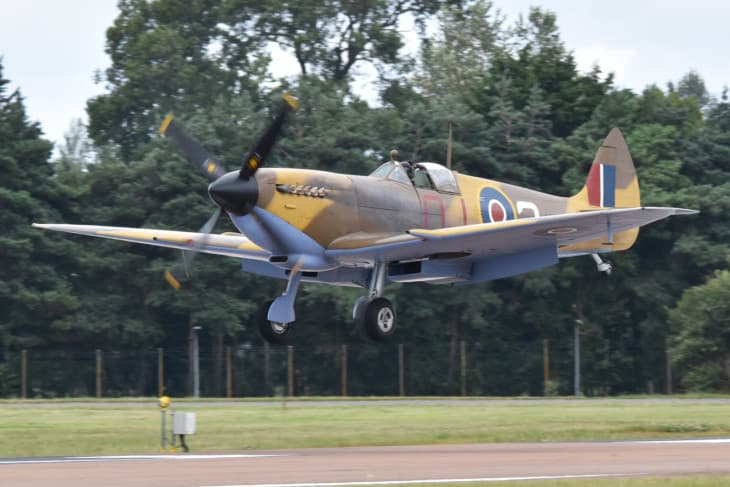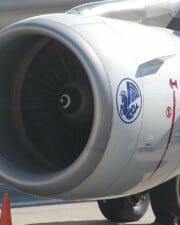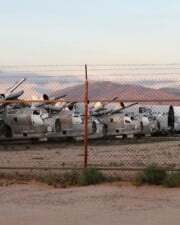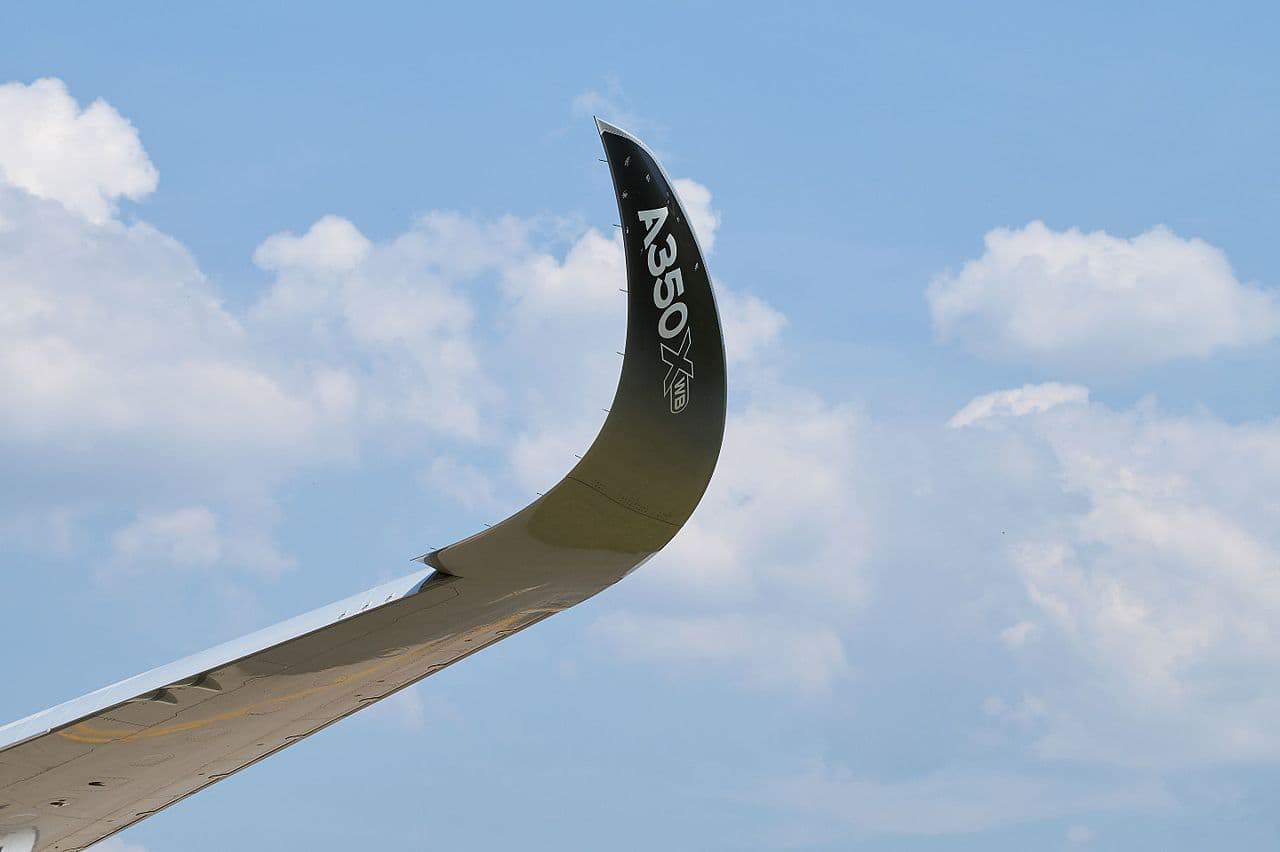Looking at a propeller airplane whilst the engines are on, it is impossible to tell the direction they spin. Do all propellers spin the same way? And what if there is more than one? Read on to find out…
Table of Contents
TLDR – The propellers on most airplanes spin clockwise, when viewed from behind the engine. This is generally the case for both single and multi-engine types, but there are a few exceptions to this rule.
Using propellers for power comes with several aerodynamic side-effects that must be anticipated and responded to by the pilot. As the direction of these effects is related to the propeller, if they all spin the same way it is much easier for the pilot to transition between planes. So what are these effects and how do they affect flight?

Propeller Aerodynamics
There are four major aerodynamic phenomena that pilots should be aware of when flying propeller aircraft:
- Spiraling Slipstream
- P-factor
- Torque
- Gyroscopic precession
These effects are subtly different but they all make the aircraft move in the same direction.
If you have a clockwise rotating prop (as most planes do), these effects will make the airplane turn to the left so they are collectively referred to as left-turning tendencies.
So let’s take a look at two of the most important of these propeller effects.
P-Factor
Pilots often refer to the left-turning tendency of prop planes as P-factor, but actually P-factor is just one of the four forces at play. Otherwise known as asymmetric propeller loading, this is when the angle of attack on the descending and ascending propeller blades is different.
Essentially one blade is taking a bigger bite of the air than the other, creating asymmetric thrust. This makes the plane yaw to the left as the power is increased.
Generally P-factor is experienced when the airflow is not hitting the propeller ‘head-on’. So for a taildragger, whose propeller is at an angle to the horizon, the P factor will be very noticeable and is most prevalent during high power maneuvers such as take-off and the initial climb.
Torque
Torque effect is another important aspect of propeller-dynamics and relies on Newton’s Third Law of Physics; ‘for every action, there is an equal and opposite reaction’.
In this case, the propeller is revolving in one direction and the torque effect is trying to rotate the airplane in the opposite direction. Therefore when power is applied, the aircraft will veer to the left.
Again, taildragger airplanes are most susceptible to this with their large power-weight ratios. To guard against this, all the pilot needs to do is apply right rudder as power is introduced, but you can imagine that if you were not expecting it, the results after takeoff could be catastrophic.
Left-handed Propellers
Although right-handed types of propellers seem to dominate the skies, there are a few ‘left-handed’ propellers around. Most notably the Mk XII Supermarine Spitfire.

Prior to this model the Supermarine Spitfires were equipped with a Rolls Royce Merlin engine that rotated clockwise, while the later versions, equipped with Rolls Royce Griffon engines, rotated counter-clockwise.
For single-engine airplanes, there are no performance benefits to a propeller turning one way or the other. So it seems there is no reason beyond the designer’s personal preference and ease of maintenance for the direction of rotation.
Although, when you consider the associated aerodynamic effects, you can see why it might be useful for pilots switching between various planes if all of the propellers turned the same way.
Counter-rotating Engines
Whilst there may be no obvious benefit to switching the direction of rotation in a single-engine plane, mixing the rotation direction of a multi-engine plane does have some benefits. Usually this means the left engine turns clockwise and the right engine turns anti-clockwise. These engines are known as counter-rotating.
By having the engines turning opposite ways, the effects of torque and P factor are balanced and essentially eliminated. The first plane to use this design was in fact the first airplane ever flown: the Wright Flyer.
With a light weight and very basic set of flight controls the Wrights eliminating the torque effect was essential in order to achieve the world’s very first (albeit short) flight.
Although this design has been around since the dawn of aviation, there are still aircraft today that use this configuration, such as the A400M Atlas. With 4 engines, the Atlas had a very different set of problems to contend with than the Wright Flyer.
The A400M is unique in the sense that all four of its engines turn the same way and it is exclusively the propellers on engines 3 and 4 that turn anti-clockwise with the aid of a special gearbox.

The Critical Engine Dilemma
This design means the Atlas and aircraft like it can avoid what is known as the ‘critical engine’. This is the engine that, if failed, would cause the most controllability problems for the aircraft.
In the early days of flying, losing an engine was much more frequent and its performance impact was considerable. For this reason multi-engine pilots are rigorously trained to always be thinking ‘what if I lose an engine now?’
When an engine is lost the thrust-drag ratio is upset dramatically, creating a thrust imbalance between the operating and non-operating sides of the plane. When both engines rotate the same way, this imbalance turns the plane towards the ‘dead engine’.
This can be counteracted with the flight controls, but if we add the left-turning tendencies discussed earlier, and the left engine fails the plane will do a lot of left-turning! For this reason the left engine is the critical engine on most multi-engine aircraft.
But if the right engine is turning the opposite way, as is the case for the Beechcraft 76 Duchess, this yawing moment is cancelled out by the right-turning tendency of the live engine, meaning neither engine is considered to be ‘critical’.
This is the case for propellers turning inwards; but on planes with propellers turning away from the cockpit, such as the Lockheed P-38 Lightning, the opposite is the case and both engines are considered critical.
Contra-rotating Propellers
Another design solution to the critical engine problem comes in the form of contra-rotating propellers. This design entails two sets of propellers on each engine, turning opposite ways. This configuration also helps to eliminate inefficiency problems caused by spiral slipstream aka propwash.
Propwash is a spiral-shaped slipstream that forms behind a propeller. It snakes backwards like a corkscrew until it eventually hits the tailfin, causing a (you guessed it!) left-turning tendency. Some manufacturers have offset the tail fin in order to solve this problem, but contra-rotating propellers also serve the same function.
Take a look at this video for a closer look at propwash…
The Avro Shackleton is one example of this layout and had a very successful flying career. This design is considerably more efficient than the generic propeller layout, with the added benefit that one row of propellers can be switched off during the cruise to conserve fuel.
Unfortunately much of this efficiency is overturned by the added complexity of the design and the extra noise produced. Crews on the shackleton often developed high-tone deafness from exposure to it for prolonged periods.

References ▾
Related Posts












